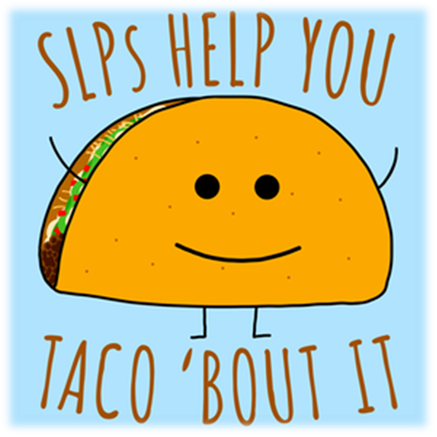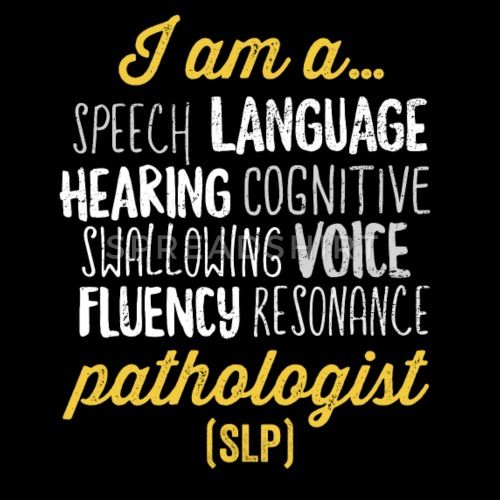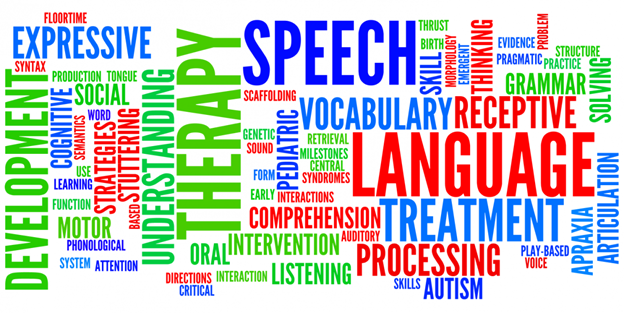Written By: Anysia J. Ensslen-Boggs, Ed.D., CCC-SLP
 As speech-language pathologists, we’re experts in speech, language, and communication milestones. So, it stands to reason that we can more easily notice aspects of atypical development as related to a child’s communication skills. In most clinical and school settings, speech-language pathologists rely on teachers, special educators, physical therapists, occupational therapists, psychologists, etc. to refer and monitor children who exhibit a suspected communication delay or disorder. Each child develops uniquely and may reach certain milestones earlier or later than others, and a child may not reach each milestone until the end of a given age range.
As speech-language pathologists, we’re experts in speech, language, and communication milestones. So, it stands to reason that we can more easily notice aspects of atypical development as related to a child’s communication skills. In most clinical and school settings, speech-language pathologists rely on teachers, special educators, physical therapists, occupational therapists, psychologists, etc. to refer and monitor children who exhibit a suspected communication delay or disorder. Each child develops uniquely and may reach certain milestones earlier or later than others, and a child may not reach each milestone until the end of a given age range.
The following developmental milestones and “red flags” will help you to familiarize other professionals with what they can expect from children in terms of typical development of various communication skills. As a result, this will aid other professionals in knowing when to seek a screening and/or speech-language pathology services. These developmental milestones are not a screening or diagnostic tool. They are meant to be used to provide information to other professionals in seeking speech-language services or making an appropriate referral.
ARTICULATION: A child’s speech should be 80% intelligible to the unfamiliar listener by 3 years of age. Most parents can almost ALWAYS understand what their child is saying, so they may not be the best judge.
RED Flags:
– Child leaves the ending off of many words
– You are unable to understand even simple words
– Child produces an /s/ or /sh/ sound with a lisp
– Says p, b, m, h, and w incorrectly in words (2–3 years)
– Produces speech that is unclear, even to familiar people (2–3 years)
– Says k, g, f, t, d, and n incorrectly in words (3–4 years)
 EXPRESSIVE and RECEPTIVE LANGUAGE: Children in school should be able to clearly communicate his/her ideas, wants and needs. They should be able to demonstrate an understanding of basic concepts, answer questions, and follow directions.
EXPRESSIVE and RECEPTIVE LANGUAGE: Children in school should be able to clearly communicate his/her ideas, wants and needs. They should be able to demonstrate an understanding of basic concepts, answer questions, and follow directions.
RED Flags:
– Difficult to understand overall meaning; cannot express ideas logically or clearly
– Child cannot maintain a topic, even for a brief period of time
– Child has difficulty coming up with the names of items or people
– Child has difficulty answering “what,” “where,” “who,” and “why” questions
– Child has difficulty talking about events, people, or things that are not in the immediate environment
– Child has trouble following directions (even when attending well)
– Child has trouble making friends, entering a play circle, or expressing feelings (pragmatic language)
STUTTERING/FLUENCY: This area of speech refers to the inability of a child to speak without getting stuck on his/her words. This problem is thought to be a neurological problem re: speech motor control. Fluency disorders are also related to genetics; it is more common in boys than girls. In young children, fluency issues are a concern if they persist for longer than 6 months.
RED Flags:
– Prolongations – “Give me the sssscissors.”
– Part-Word – “Give me the sci- sci- sci- scissors.”
– Whole-Word – “Give Give Give me the scissors.”
– Phrase repetitions – “Give me, Give me, Give me the scissors.”
– Rate – child talks so fast that he/she exhibits the behaviors listed above
– Excess tension, tightness, or movement of the face or upper body to produce a word
– Anxiety about talking
GENERAL WARNING SIGNS:
By 3 Years:
– Is not using at least 3-word sentences
– Speech is not at least 75% understandable to unfamiliar listeners
– Child is leaving the beginnings or ends off of most words
– Cannot accurately answer yes/no questions
– Cannot answer simple “wh” questions like “Who is that?” or “Where is the dog?”
– Is experiencing stuttering behavior for more than 6 months
By 4 to 5 Years:
– Is not 90-100% understandable to strangers despite age-appropriate articulation errors
– Is not consistently using 4+ word, complex sentences
– Is not asking a variety of questions to gain information (who, what, where, why, and when)
– Is having difficulty with grammar or pronoun use
– Cannot tell a simple story
– Cannot follow simple two-step directions
– Has difficulty answering simple who, what, where and why questions
– Cannot not provide/identify simple rhyming words
At Any Stage of Development:
– ANY loss of speech or social language skills at ANY age
– Never gestures or imitates
– Does not appear to understand speech, or appears to be unable to hear
– Never develops words beyond repeating others over and over
CLICK HERE to view and download my Speech & Language Referral Form I personally developed for teachers and other professionals to use to refer students for an SLP screening. I hope you find this tool useful!
Explore online continuing education courses from Anysia below:
Parkinson’s Disease: Causes, Symptoms, Assessment, and Treatment
Therapists Rehabilitation Strategies for Dementia Patients
Aphasia: What Rehab Professionals Need to Know About Diagnosis and Treatment
Cleft Palate in the School-Age Population
Adult and Pediatric Voice Disorders
Improving Cognitive Communication Deficits
Visit summit-education.com for more information.
About Summit Professional Education
Summit equips therapists with better continuing education courses that provide CEUs while impacting patient outcomes. Find high-quality on-demand CE along with the largest offering of live options — including live webinars, live streams, and in-person courses. Want to deep dive on a topic? Summit offers hundreds of 6-hour courses for the most in-depth learning!

